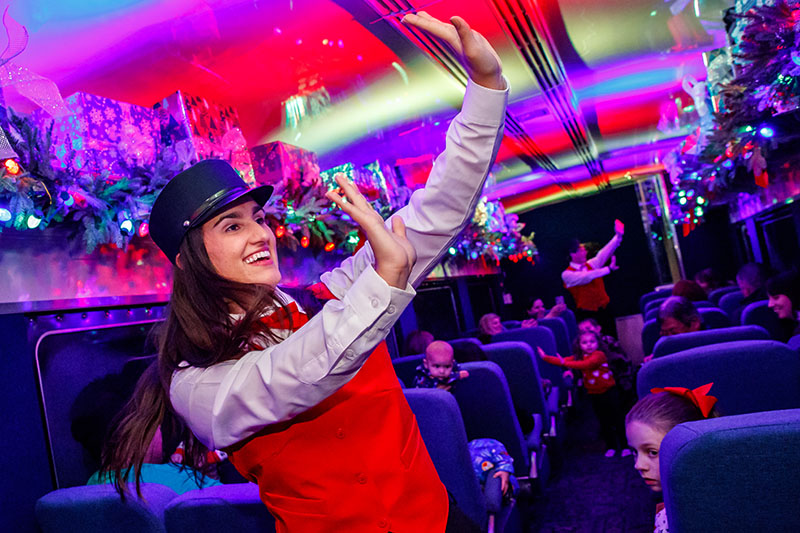
For Guy Rhodes, being the lighting designer on the Polar Express Train Ride pushed his and his colleague’s “know-how and technical fortitude to the max.” The show, produced by Rail Events Productions, takes guests on an hour-long train ride where they’re treated to a live, Broadway-style show in the aisles of the train. And it’s replicated simultaneously in Chicago, New Orleans, Ft. Lauderdale, and Whippany, NJ. “We deploy a complete theatrical lighting and sound system in the luggage racks of each car and treat the show with as much attention to detail that we would a show in a proscenium space. Behind the scenes, our crew consists of myself on lighting design, along with a sound designer, props designer, costume designer, as well as two stage managers and multiple production managers making it all happen.”
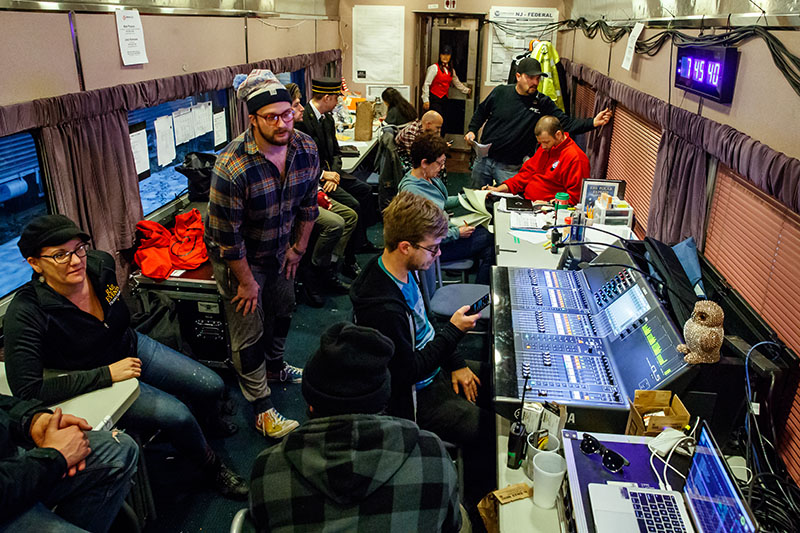
The initial stats are pretty impressive: Up to 16 universes of DMX per train; 1,944 control channels per train (including 1,800 RGB pixels on holiday light strings); four simultaneously-run lighting cue lists used during the show triggered via a QLab MIDI show control; and wireless sound and lighting control to trackside displays that sync with the show aboard the train.
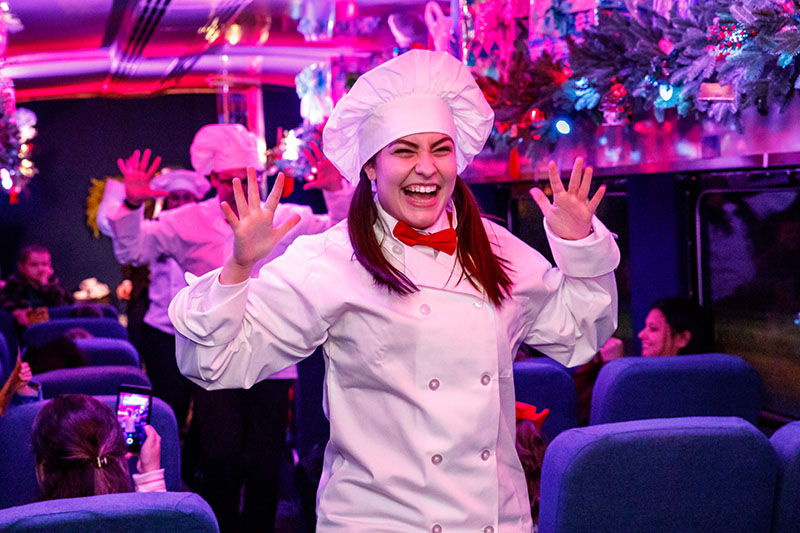
Rhodes got the gig from old friend Mike May. When May became production manager of this show, he tapped Rhodes to be the LD. This is third year designing for it. A big part of the challenge is the sheer ability to stuff a small space with a lot of gear. “The overhead luggage racks of each car become our lighting and sound positions, with gear stuffed just about anywhere we can hide it with garland and wrapped presents,” he says. “Each train consists of six passenger cars, with a baggage car in the center of those which functions as our control booth, dressing room, and production office.” On either side of that baggage car, the show runs as a mirror image of itself, with (there are two of each principal cast member aboard each ride), and cascades from the center of the train outward. Car 1A and 1B on each side of the baggage car get the first scene of the show, then they move on to car 2A and 2B and do that scene again, while cars 1A and 1B are now getting the second scene. “Programming this show was a formidable challenge. I always tell people it’s like sitting in an auditorium with three stages, and you’re lighting the same show on each stage, but the show is one scene offset on each stage, but it’s all happening at once, and you’re using one lighting console and rig. Oh! And, you’re blind-folded, because from the tech car, you can’t see what’s going on down the train.”
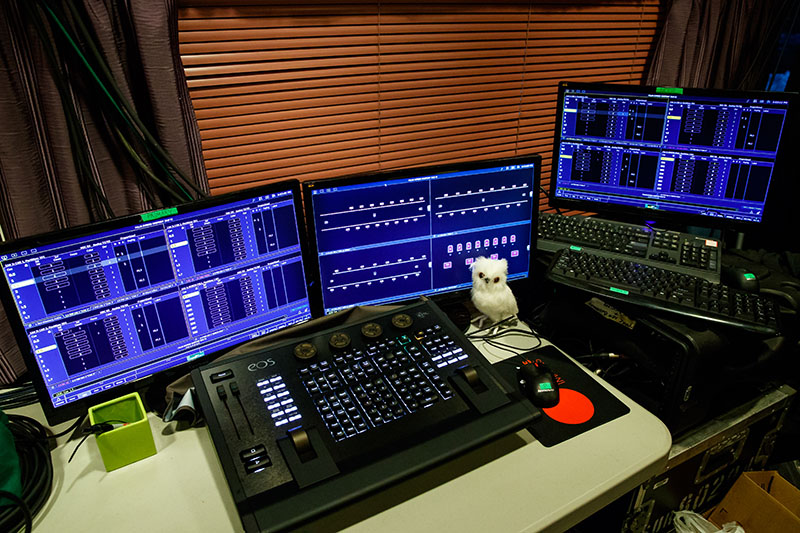
MIDI control is key and the show would not be possible to do without it. “My cues are triggered with MSC via QLab, which is also running all of the sound cues for the entire show. Stage managers call around 20 cues per show via QLab, which gives us the ability to keep the show timing in-check. Thankfully, with some of the best stage managers in the country calling the performances, things move along rather fluidly. During tech, having access to ETC’s iRFR app on my iPad is a huge plus, giving me the ability to adjust looks and monitor the cue stack in each car as the cast rehearses without having to drag a console around.”
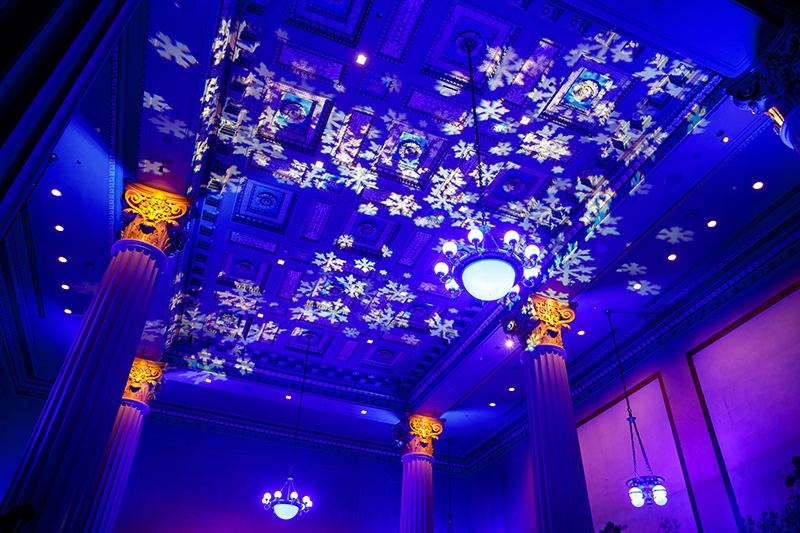
Rhodes says his “bread and butter fixture” is the ColorBlast 12 from Philips Color Kinetics. “Since there is only so much room in the overhead luggage racks, it’s important that the fixtures up there are very low profile. Each car has 16 ColorBlasts that I use to create slashes of color across the ceiling. The other huge advantage of the ColorBlasts is that they draw very little power. One of the many caveats of doing a show on a train is that there is limited power available. “In each car, we have only two 120V 20A circuits, and we have to share those with sound. So, power draw is a huge, huge factor.” His other go-to fixture in each car are MR16 “birdies” driven by 4-channel dimmer packs. “The birdies define acting areas in each car and pull our actors out of the saturated color washes going on overhead from the ColorBlasts.” This year, they also integrated some holiday lights called Cosmic Color Bulb Strings distributed by Light O Rama. “The lights look like traditional C9 holiday light strings, but each bulb is actually an individually controllable RGB pixel on the console. Each car has 300 of the bulbs – 150 per side, dressed in garland that runs along the luggage racks. This has been something I’d envisioned since the first year I designed the show, but the problem was finding a DMX controllable holiday light string that actually looked like a retro, flame-shaped C9 or C7 style bulb. I was really excited when I found the Light O Rama products.” On the control end, he says the ETC EOS family of consoles were “a no-brainer. The Polar Express, with all the show control in play, is a show that happens exactly the same way each time, which the EOS system is very adept at handling. This year, we’re using a combination of EOS RPU’s to control the trains, and Ions for ticketing and waiting areas. During tech, I use an EOS programming wing to drive the RPU’s. Another consideration with choosing the ETC EOS family was that the techs in each city would be familiar and comfortable with it” as they are typically hired from the theater world.
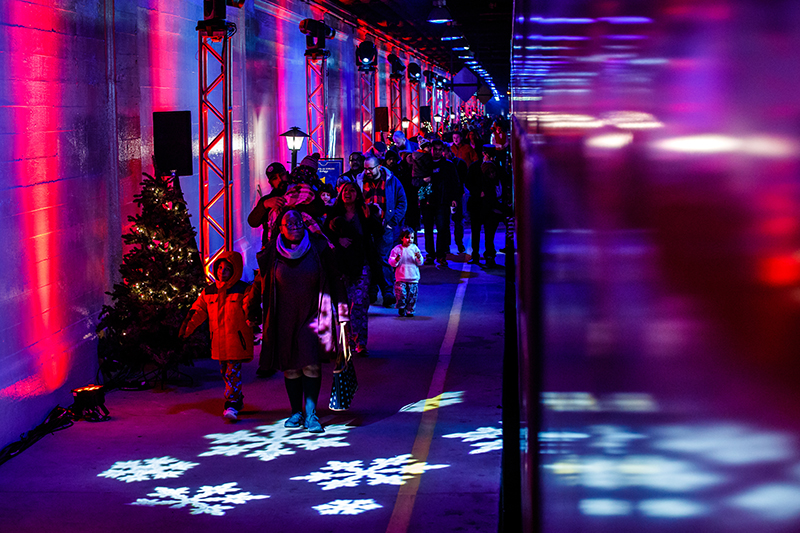
Just wrapping his head around and programming three shows happening at once on the same console was his biggest challenge. “The remaining and ever-present challenge is dealing with finicky train power, which modern electronics don’t always like.” But the show is definitely a big hit: “After all the troubleshooting, long hours, and sometimes frustration, it’s extremely rewarding to see the families lining up in their pajamas to experience the Polar Express. Hearing the reactions from little kids before they’ve even boarded as they see the lights on the platform in Chicago is a treat. And, of course, when Santa shows up later in the ride, all the kids absolutely lose their minds. These moments are why got into lighting design in the first place.”
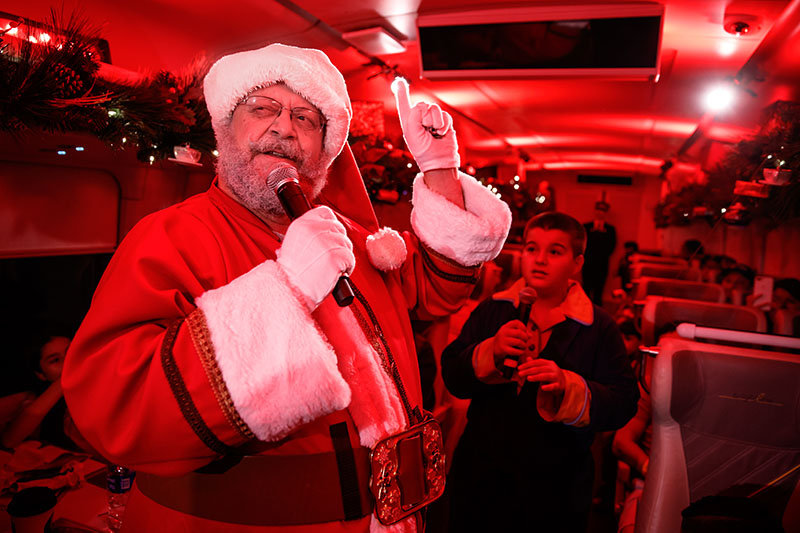
GEAR LIST
(For Chicago Train – each location differs slightly)
TRAIN
- 98 Color Kinetics ColorBlast 12 LED
- 13 12-Channel ColorBlast Power Supplies
- 50 MR16 “Birdie” 75w With Clamps and Gel Frames
- 7 4-Channel DMX Dimmer Packs
- 37 Cosmic Color Bulb Strings
- 25 Cosmic Color Bulb String Power Supplies
- 2 ETC EOS RPU (Primary and Backup)
- 7 Pathport Octo sACN Nodes
- 1 ETC NET 3 Show Control Gateway
- 2 City Theatrical SHoW DMX SHoW Baby 6 (2 TX)
- 2 SHoW DMX SHoW Baby Long Range Antennas
CHICAGO PLATFORM
- 20 Martin MAC Viper Profile
- 42 Elation Sixpar 300
- 1 480v to 208v three phase step-down transformers
- 1 36 Channel 208v Distro
- 2 City Theatrical SHoW DMX SHoW Baby 6 (2 RX)
- 20 10’ 12” Box Truss Silver
- 20 12” Truss Floor Bases
- 40 Truss Bolt Sets (With Truss Tools)
- 40 25lb. Sand Bags
- 22 Black Ratchet Straps
CHICAGO TICKETING
- 6 Martin MAC250 Entour Profile
- 6 Elation Sixpar 300
- 4 ETC 50° Source Four Ellipsoidal 575w
- 1 ETC Ion Console
- 4 10’ Schedule 40 Pipes
- 4 50lb Floor Bases for Schedule 40 Pipes
- 2 10’ 12” Box Truss Silver
- 2 12” Truss Floor Bases
- 4 Truss Bolt Sets (With Truss Tools)
- 12 25lb. Sand Bags
- 2 Black Ratchet Straps


